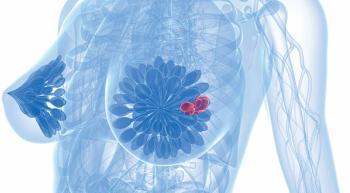
New microRNA Models Predict Responses and Toxicities in Various Cancers
Joanne B. Weidhaas, MD, PhD, MBM, presented 2 abstracts based on microRNA technology at the 2025 ASCO Annual Meeting that demonstrated predictive power.
During an interview with CancerNetwork®, Joanne B. Weidhaas, MD, PhD, MBM, a professor in the Department of Radiation Oncology, vice chair of the Division of Molecular and Cellular Oncology, and director of translational research at the David Geffen School of Medicine at UCLA Health Jonsson Comprehensive Cancer Center; cofounder of MiraDx; and founder of MiraKind, spoke about 2 abstracts she was presenting at the
The first abstract focused on microRNA-based biomarkers in soft tissue sarcoma treated with hypofractionated preoperative radiation therapy and how the use of them helped identify which patients had favorable vs unfavorable responses with stereotactic body radiation therapy.
The second abstract reported results from a germline genetic model that evaluated patients who were treated with single-agent anti–PD-1/PD-L1 therapy and was predictive of acute and late immune-related adverse effects and response to anti–PD-1/PD-L1 immune checkpoint inhibitor therapy. Cancer types included in the study were melanoma, genitourinary cancers, non–small cell lung cancer, head and neck squamous cell carcinoma, and breast cancer.
Weidhaas stated that one of the most significant advantages of using germline microRNA variants as predictive biomarkers is that there is no difference in the results of testing these variants depending on where or how the sample is collected, which is unlike tumor- and blood-based biomarkers.
Ultimately, this technology was developed relatively recently and was only possible because of the discovery of microRNAs —approximately 25 years ago—and it has provided oncologists the ability to understand individual patient responses as well as the toxicities they experience.
Transcript:
[For] the microRNA biomarkers we study, the most important difference is that they are germline-inherited DNA differences that we’re measuring. We’re not looking at the tumor—although they’d be present in the tumor—we’re instead looking at the patient. There are a couple of advantages to that that are obvious. Unlike a tumor biopsy or blood biopsy, you don’t have to worry about the changes that might happen based on where the biopsy was or how things are stored or shipped, because these are germline DNA changes and they don’t change. They’re permanent. They can be collected by a cheek swab—that’s an important difference. Another fundamentally important difference is that we are looking at the patient, not just their tumor, and that's something that's been hard to do in oncology. Although every oncologist would say…that [sometimes] you will treat 2 people whose tumors seem very similar but they have very different responses. It’s clear the patient is contributing to their outcomes, and one important way is in [the adverse] effects of the treatment we give. The tumor has never been able to tell us who would have bad [adverse] effects from treatment, so it’s an exciting opportunity. Both abstracts look at toxicity from treatment as well as response.
The most important part of this is that we’re considering the patient and their response. We finally have the tools to measure that response. MicroRNAs are relatively recently discovered. The discoverers just got the [Nobel Prize] this year, that’s how new it is…. It’s given us the opportunity and the tools to begin to understand individual patient responses, which include bad responses—toxic responses—and we just haven’t had the tools before. I know all my colleagues care about toxicity, so it's exciting that we can begin to chip away at that and improve patient care.
References
- Weidhaas JB, McGreevy K, Nikitas J, et al. MicroRNA-based biomarkers of outcome in soft tissue sarcoma treated with hypofractionated preoperative radiation therapy. J Clin Oncol. 2025;43(suppl 16):11538. doi:10.1200/JCO.2025.43.16_suppl.11538
- Weidhaas JB, McGreevy K, Drakaki A, et al. MicroRNA-based signatures of early and late immune-related adverse events to anti-PD1 treatment. J Clin Oncol. 2025;43(suppl 16):2661. doi:10.1200/JCO.2025.43.16_suppl.2661
Newsletter
Stay up to date on recent advances in the multidisciplinary approach to cancer.

















































































